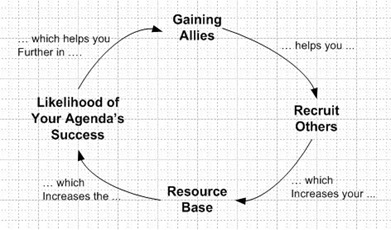Forming coalitions is an essential part of activist organizing. They are the glue that holds many communities together. Whether a group of individuals or multiple organizations, non-profits or campaigns, coalitions allow for diversity, creativity and generally work as an effective way to take on a cause. This guide will cover:
What is a coalition?
Advantages
How to get started?
How to maintain
What are they?
Coalitions are alliances that work towards a common goal. In activist organizing, groups build themselves up from scratch and may tackle a variety of issues. For example, a radical feminist group might organize protests for female prisoner rights and indigenous sovereignty as well as pro-choice causes. A good coalition might be one specifically against poverty that would include the feminist group, along with anti-racist groups or disability rights groups.
Every individual or organization has their own set of interests and points of view. Good coalitions bring together represent many local interests and attracts a power base that influences social change.
Coalitions allow activists to pool resources; acknowledge intersectionality and foster diversity around a cause. They can be multi-issue or single issue, temporary or long term. Coalitions are flexible and work well for problem solving, raising awareness and changing policy.
Advantages
A grassroots coalition with a broad mandate can increase credibility. When a variety of community groups or individuals are invested and participating in a cause it seems more legitimate. This is when the mainstream media and public officials begin to take notice and take the issue more seriously.
Coalitions also provide opportunities for everyone to work in their area of expertise. This acknowledges and shares community knowledge among its members. They foster new ideas with fresh perspectives and can be a platform for networking. When building a coalition, the goal is typically to change an aspect of the community that’s socially unjust. One group can’t be everywhere at once. Community members can help give new information on an issue or important intelligence. Feedback from the coalition is invaluable.
Getting started
Before forming a coalition, check out the local scene. Does something like a coalition already exist? What issue/s does it focus on? How effective is it? Sometimes communities don’t need more coalitions, but more effective ones. Supporting coalitions that already exist can go a long way. Also consider how a new coalition would function in the current community landscape. Would it collaborate heavily with other coalitions or work separately?
Hold a brainstorming session. Gather interested activists, grassroots community leaders and participants from recent protests or campaigns. Get people talking about what would work well in the community, what common needs should be addressed and what the goals should be. Invite activists from groups that would hopefully participate in the coalition.
Sometimes coalitions adopt champions, or prominent activists or allies to speak out on behalf of the cause. It’s should be a collective decision whether or not to be represented by a single person, but this can sometimes generate a lot of attention for a newly formed coalition.
Figure out the responsibilities and operating costs of the coalition. What kind of structure will it have (leaderless, collective, one leader)? What kind of commitment will it require from everyone involved? How often will members meet? How will costs such as printing posters or doing public outreach be negotiated? Discuss these issues first thing at the brainstorming session. Some community members may have ideas or resources that can solve these issues before a coalition is launched and runs into them. This can cut down on a lot of headaches later.
Don’t assume everyone interested has a perfect understanding of the issue. Hold preliminary workshops on creating safer space, anti-oppression frameworks for organizing and make all of the goals clear. Once people start joining, draft a mission statement and start taking action.
Maintain
Everyone wants to be part of an active and engaging movement. So keep your coalition involved in the community. Be a presence at protests, run events and workshops and update online blogs regularly. Make sure to celebrate victories. It can be easy to take on causes that seem so entrenched that they will never change. Take the time to acknowledge the importance of resistance and the hard work of community members. Keep meetings focused and as accessible as possible.



